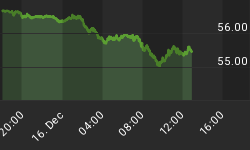"The Committee sees growth as likely to moderate to a more sustainable pace, partly reflecting a gradual cooling of the housing market and the lagged effects of increases in interest rates and energy prices." This is the statement issued by the FOMC on May 10 when it raised the fed funds rate to 5%. Is it getting confirmation that growth is moderating led by the housing market? You bet. Today the National Association of Homebuilders (NAHB) released their index of new home demand and it was ugly. The composite index fell to a level of 45 - its lowest reading since June 1995 (see Chart 1). In the current cycle, this index peaked in June of last year and has been in a free fall since November. The behavior of the housing sector typically leads the behavior of other sectors of the economy at inflection points. We would expect this even more in the current cycle inasmuch as housing has been a major support of employment and consumer spending, the latter as a result of mortgage equity withdrawal. In many of its public pronouncements, including the one quoted above, the Fed specifically mentions housing as a sector it is watching for confirmation of the validity of its medium term economic forecast. The Fed also mentions the behavior of the housing sector as the greatest downside risk to its economic forecast. Today's NAHB index might have set off some alarm bells at the Fed.
Chart 1
As mentioned, housing has been a major contributor to employment growth this cycle. The direct contribution from the construction industry appears to be softening as shown in Chart 2. In March and April, new hires in the construction category of nonfarm payrolls have been only 6,000 and 10,000 respectively, less than half the 12-month moving average. In the past several months, two large mortgage-related financial institutions, Ameriquest and Washington Mutual, have announced staff reductions of 3,800 and 2,500 respectively.
Chart 2
Another confirmation of the Fed's forecast is in recent consumer spending data. Retail sales in April, excluding the price-inflated gasoline component, were up only 0.1%. If the April level of retail sales ex gasoline were to persist in May and June, second quarter retail sales ex gasoline will have grown at an annual rate of 1.0% vs. 14.2% in the first quarter.
We believe the Fed's economic forecast is on track. Actually, we believe that the Fed's economic forecast might be a bit optimistic. The FOMC wants to pause in its interest rate hikes now. The data on the economic growth side of the ledger are coming in to support that desire. The question is whether the core inflation data for April and May will allow a new Fed chairman with perceived squishy inflation-fighting credentials (unjustly perceived in our view) the luxury of pausing so as to avoid a recession in 2007.
















